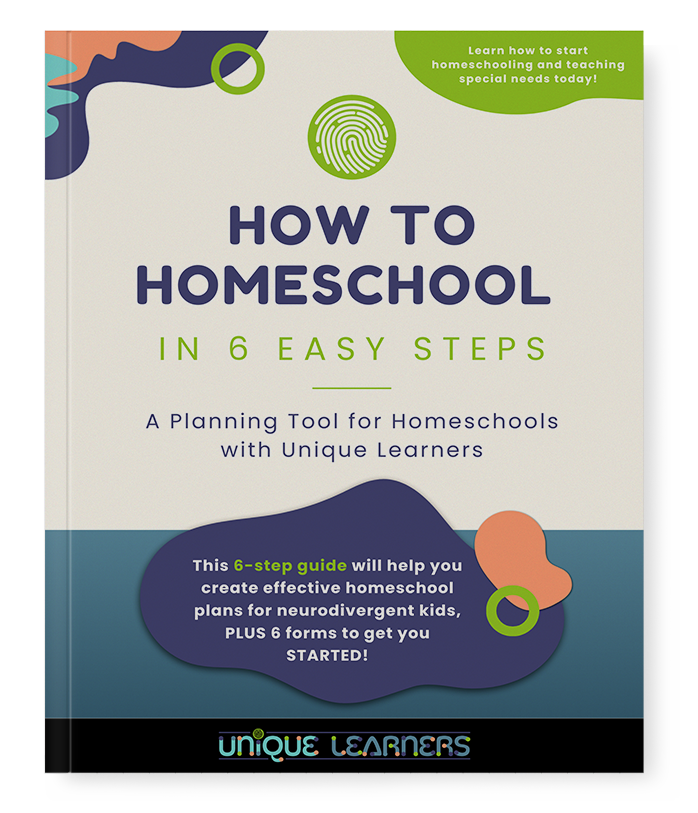If you have a child who struggles in reading due to dyslexia or other reading disability, you may be wondering what you can do to make the learning to read process easier for your kiddo.
One of the first options that many parents consider is tutoring or extra help for their child. Typical tutoring takes the form of homework help which is often a band-aid approach that does little to address the way a neurodivergent child learns to read.
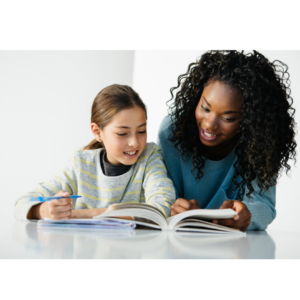
A second option is to hire an academic therapist who uses specialized methods of systematic, multisensory phonics to break down the structure and rules of the English language. Either of these interventions may make some difference; however, neither does anything to address the brain’s processing skills that underpin the child’s ability to read.
Learning to read is both a visual and an auditory task. Although the current research-based definition of dyslexia attributes that specific reading issue to auditory processing, there is still a visual component for any student learning to read.
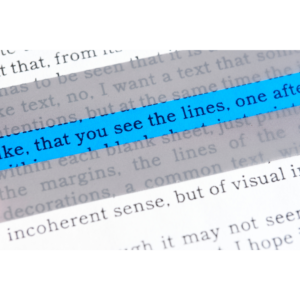
Many parents turn to strengthening the brain skills associated with learning. Common therapies that address reading difficulties are: speech/language therapy, occupational therapy, vision therapy, visual processing therapy, auditory processing therapy, and executive functioning therapy.
This article is going to address the differences between vision therapy and visual processing therapy because they are both critical to making a neurological difference in helping the visual components involved in reading.
What does vision therapy do?
An optometrist evaluates visual acuity or the ability of a person to distinguish details of shapes and things seen from various distances clearly. Optometrists also evaluate peripheral vision, depth perception, seeing colors. Optometrists can diagnose clarity of vision and various eye disorders. Visual acuity is typically corrected with glasses or contact lenses.
In development, a child’s visual system typically comes to maturity around age 9 or 10. This is frequently why schools hesitate to assess reading difficulties until third or fourth grade so that child is given time for the visual system to develop. Third or fourth grade is also the window where vision screening catches whether a child needs corrective lenses for acuity. In a school classroom, this often is discovered when kids say they can’t see the board for near-sightedness, or they can see the board but can’t read a book or worksheet for far-sightedness.
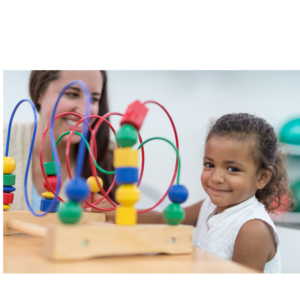
Some kids who have difficulties with reading describe a sensation of the words jumping around on the paper or the lines are curvy. Others may describe seeing two of each letter. Some kids can’t describe what they see, yet when they read or write, they have letter reversals or flip letters upside down. If your child seems to have any of these issues, you will likely notice frustration, avoidance of reading tasks, headaches, or tiredness after just a few minutes of working.
Some optometrists are specially trained to oversee vision therapy, which is a treatment program that deals more with the muscles surrounding the eye that control eye movements.
Skills trained in vision therapy
Vision therapy is a carefully planned sequence of activities that improves the visual system speed, accuracy, flexibility, and endurance. The specific muscle skills that are worked on are: visual reaction speed, eye teaming, eye focusing, eye tracking, and eye-hand coordination. Of course, vision therapists use more scientific terminology to describe each of these movement skills controlled by the brain’s visual system. If your child receives vision therapy, be sure to ask if you don’t understand the medical terms.
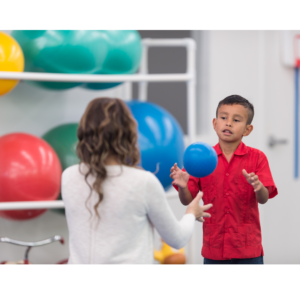
The results of vision therapy help a child to maintain stable visual skills for coordinated binocular vision. Vision therapy can be an excellent start to helping a child who struggles in learning to read. Yet, once the muscles surrounding the eyes help them to focus and move together, the images transfer to the brain. That is where visual processing skills take over. The brain has to receive, interpret, and respond to the information swiftly and accurately.
What are visual processing skills?
Visual processing skills take over once an image comes in through the eyes, goes through the optical nerve to the occipital lobe of the brain. The images are processed to bring meaning to the image. Different areas of the brain work together to accomplish problem solve and help us react to what we are perceiving. The visual and auditory systems work together with the frontal lobe of the brain to do academics, like reading, writing, and math.
- Visual discrimination – the ability to discern the differences between shapes, letters, or numbers.
- Visual memory – the ability to remember what something looks like when it is removed
- Visual-spatial relationships – the ability to identify the spatial orientation of shapes
- Visual form constancy – the ability to match similar shapes that may be different in color, size, or orientation.
- Visual sequential memory – the ability to see and then remember items in sequence
- Visual figure/ground – the ability to identify forms that may be partially hidden or camouflaged within a larger picture
- Visual closure – the ability to identify familiar shapes that are partially completed
- Visual attention – the ability to sustain focus and notice details when presented information visually
- Visual tracking – the ability to follow a trail, lines of print, or move between lines of print without losing place
So what can be done to help visual processing skills?
Visual processing brain skills help students to develop reading, writing, and study skills. Most kids improve these visual processing skills through typical academics of learning shapes, colors, size, letter symbols, and number symbols. Here are some practical ideas for helping young students to develop visual processing skills.
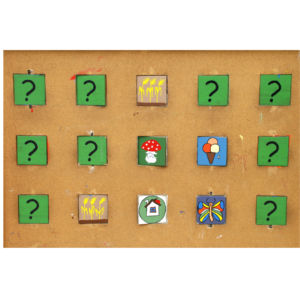
Visual discrimination. Play a game of “Which one is different?” Line up 3 to 7 items that represent similar shapes or categories. Have the student identify which one is different. Ask for an explanation because sometimes kids see something that isn’t readily apparent but may be a valid difference.
Visual memory. Collect random items from a junk drawer or school supply box. Some possible items may be a pencil, pen, marker, eraser, dice, feather, cap, ruler, fork, spoon, tape, glue stick, etc. Mix it up each time. Start by placing 3 items on a cookie sheet or tray. Cover the tray. Give the student a signal and uncover the tray. Let the student look at the tray for 10 to 15 seconds. Do more or less time depending on the ability of the child. Cover the tray again and ask the student to name the items on the tray. Work your way to as many as possible. Most people, both kids and adults, can recall around 7 objects.
Visual sequential memory. Gather pictures of animals or common objects. Mount on index cards. Start by setting out 3 picture cards in a sequence from left to right or top to bottom. Have the child look at the pictures for 10 to 15 seconds. Turn the cards over and ask the student to name the objects in order.
Visual figure/ground. Books, like I Spy and Where’s Waldo are great for visual scanning skills and identifying objects hidden in a larger picture.
Visual attention. Math activities involving graphs and charts help to develop visual attention skills.
Visual tracking. Word find or word search puzzles help to develop visual tracking skills. For students who struggle with reading, activities that involve following a trail or circling a specific picture or letter can help with visual scanning and tracking skills.
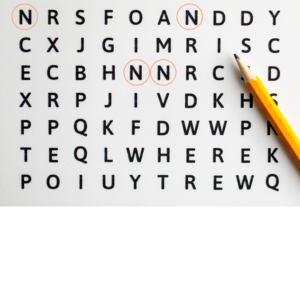
Some kids with learning disabilities have more significant visual processing difficulties. If your child is nearing 9 or 10 years old and still struggles in remembering letter sounds, recalling sight words, or knowing math facts on flashcards or paper, you may want to look into technology-based brain training programs. The intensity of technology-based cognitive processing games can make a difference in how the brain is able to discriminate and make meaning from visual information. Selecting the right cognitive training program is important so that it actually matches the student’s needs, trains the appropriate visual processing skills, and creates stronger neurological connections. Cognitive training typically involves activities and games that develop the skills needed to make learning academics more effective.
If you are interested in cognitive training for visual processing skills, email me at: sueh@uniquelearners-suehegg.com. I will be happy to assist you in finding the appropriate cognitive training program for your child.
